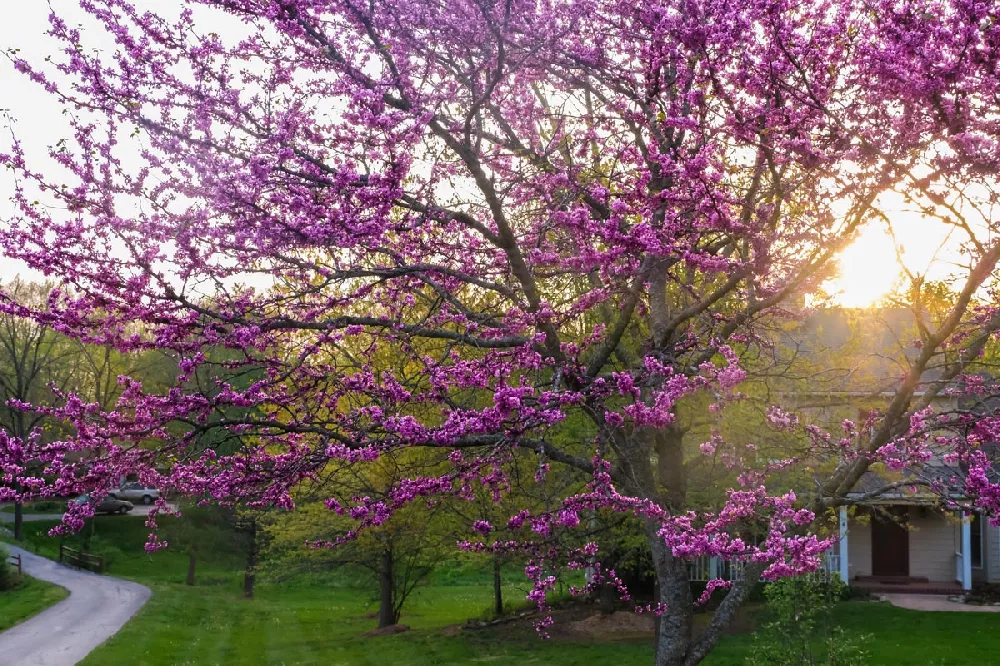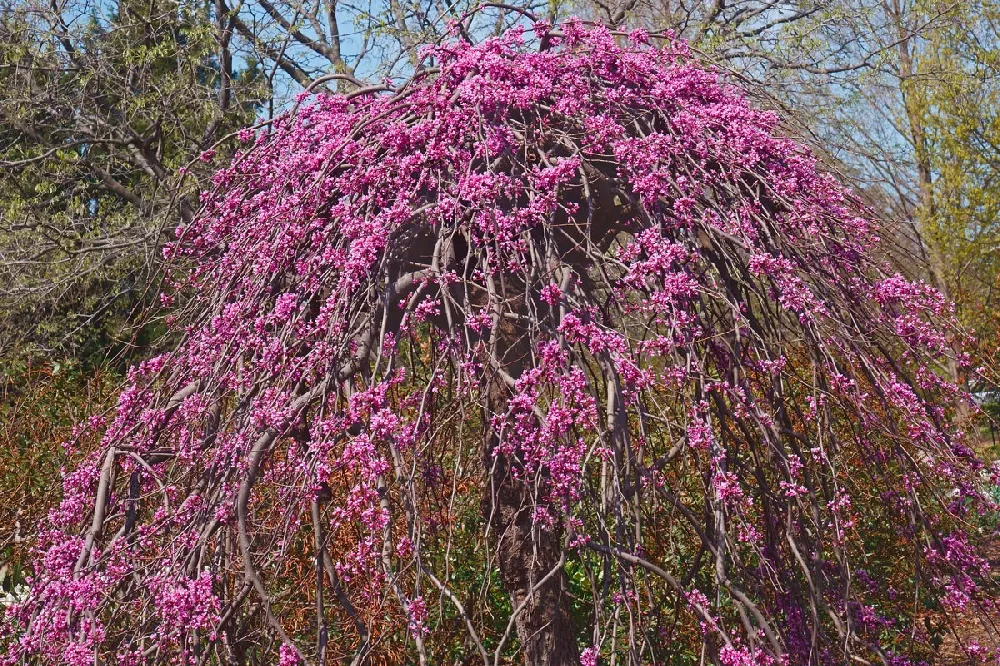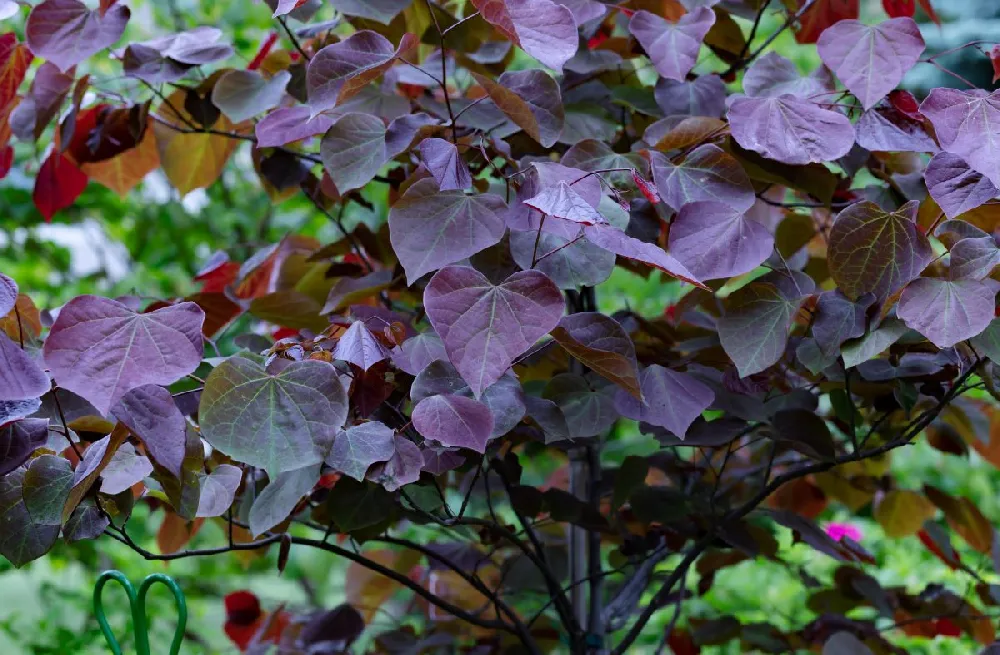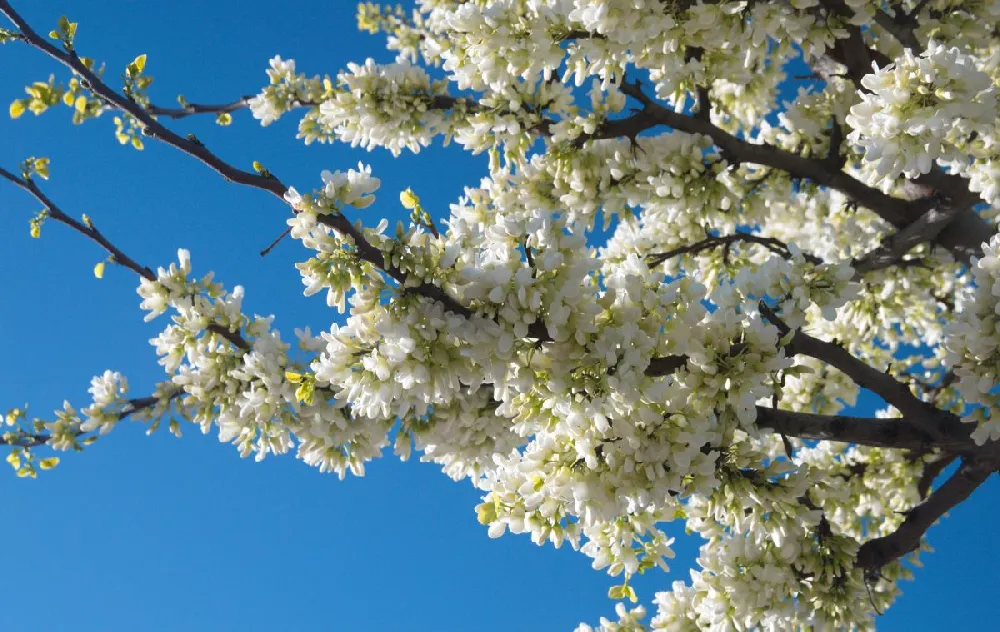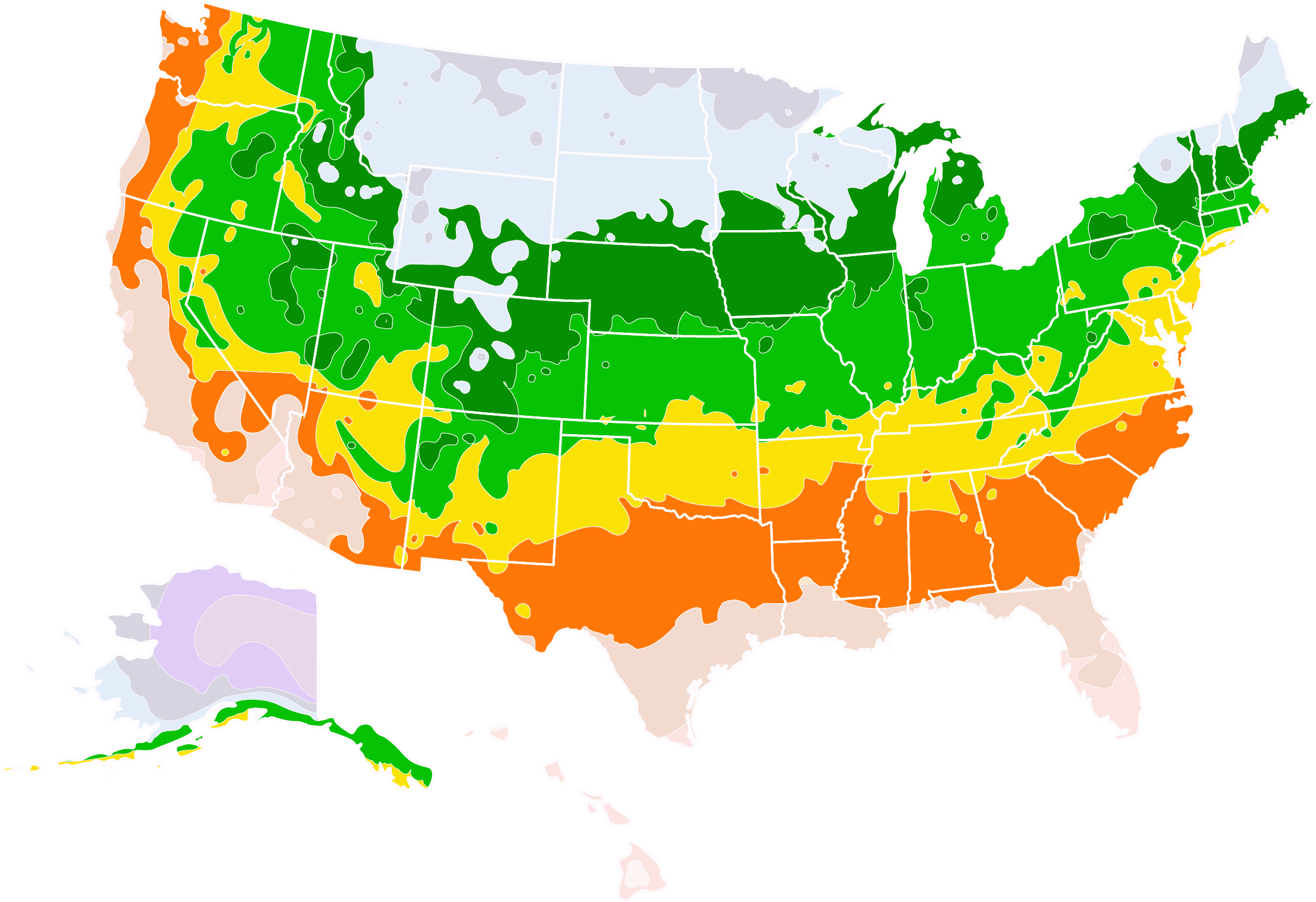- Home >
- Redbud Trees >
- Pink Pom Poms Redbud Tree
Pink Pom Poms Redbud Tree for Sale - Buying & Growing Guide
- Ships in 1-2 days
- 1-Year Warranty Eligible
- Pots or accessories are not included unless specified in the product options.
Shipping Details:
Once your order is shipped, you’ll receive an email with a tracking number and estimated delivery date. Most orders ship immediately, but some items are seasonal and may only ship in spring or fall. These products are noted on the website.
If your landscape in spring looks like a fireworks display, you probably have a few Pink Pom Poms redbud trees, Cercis canadensis ‘Pink Pom Poms.’ These spectacular flowering trees have bright pink double blooms that cover the branches when the weather starts to warm up. The perfect specimen tree, this redbud's interest doesn't die down after the flowers are gone, though. Large, heart-shaped leaves and a full canopy make for an eye-catching sight in summer, and fall sees those leaves turning brilliantly yellow. Even in winter, the tree's attractive silhouette and gray bark provide value at a time when most other landscape elements are under snow. Here are a few more reasons to consider adding one or more Pink Pom Poms redbud trees to your garden:
- They are attractive to wildlife, including birds, bees, and butterflies, although deer avoid them.
- These redbud trees are pest- and disease-resistant and, if properly cared for, have few health concerns.
- This sterile variety produces no seed pods that need to be raked up in fall.
Plant Care
Sunlight

The Pink Pom Poms redbud tree does best in partial to full sun, with at least four hours of direct light a day.
Watering
Newly planted redbud trees need water a few times a week; established plants need watering during dry weather.
Fertilizing

Fertilize in spring with a product designed for landscape trees and shrubs, such as a 5-10-5 formula.
Planting and Care
Planting instructions
Site your redbud tree in a spot with fertile, well-draining soil where it will get at least four hours of sun a day. At the northern end of its range, aim for six or more hours of light a day. Unpot your sapling and tease out any encircling roots, which can girdle the tree and slowly kill it. Dig a hole that’s as deep as the root ball and twice as wide. Place the tree in the hole, and, while holding it steady and upright, fill in around it with good-quality topsoil. Tamp down soil as you go to eliminate air pockets. Water thoroughly. Apply a 2- to 3-inch layer of an organic mulch, such as bark chips, around the tree’s root zone to conserve moisture and hinder weeds, being careful that it does not touch the trunk itself.
Watering and nutrients
During its first growing season, water your redbud tree a few times a week, so that the tree is receiving about an inch of water a week. After that, you can taper back watering. To know if your tree needs water, dig down 2 inches near the trunk. If the soil is dry, give your tree a good soaking. Fertilize in the early spring. You can do this either by giving it a feeding of an all-purpose fertilizer designed for landscape plants or by raking back the mulch and applying a layer of well-rotted organic compost or manure.
Pollination
Although bees and other pollinators are attracted to the flowers of the Pink Pom Poms redbud tree, the trees themselves are sterile. New trees are created by taking hardwood cuttings from existing trees and planting them in a medium that stimulates root growth.
Pruning
Your redbud tree shouldn’t need a lot of pruning for shape; its naturally vase-like shape is achieved without effort. However, you should monitor your tree for dead, diseased, or damaged limbs, which can be cut out whenever you see them. Also keep an eye out for any branches that are rubbing against each other. You can trim out low branches on the tree as it matures to allow for easier mowing, as well.
Pests, diseases, and animals
The Pink Pom Poms redbud tree is generally pest-free. Keep an eye out for leaf-feeding insects, such as tent caterpillars and weevils. Scale insects may also be attracted to the trees. Prune out any branches that are infested, and use insecticides sparingly. The most common disease of the redbud is cankers,fungal growths that infect limbs or trunk. They are most often found on trees that already have an open wound, though, so be careful when you mow around your redbud tree.
Achieving maximum results
What’s the best way to utilize a Pink Pom Poms redbud tree in your landscape? Many gardeners would say to place your redbud tree where it will be seen by as many people as possible. Using it as a specimen tree in a front yard, perhaps with a circling of smaller annuals or perennials around it, is one excellent way to showcase your tree. As a smaller tree, it can work well in urban lots, and it is an eye-catching centerpoint in cottage gardens. The aesthetic appeal of the tree’s flowers, as well as the winter interest, also makes it a logical choice for Asian-inspired gardens. A mass planting of three or more redbud trees would be spectacular lining a driveway or clustered near a home.
FAQs
Where can Pink Pom Poms redbud trees be grown?
This attractive tree is hardy in USDA hardiness zones 5 through 8. That means it can handle temperatures down to -10 degrees Fahrenheit. This covers the majority of states in the U.S., excepting those in the far south and northern plains and the northernmost sections of New England. If you live north of its native range, you might be able to grow a redbud tree in a protected spot where it will be shielded from winter winds and cold.
How fast does this redbud tree grow?
The Pink Pom Poms redbud tree has a moderate rate of growth, putting on up to a foot of new growth when young, and tapering off as it reaches its full height of roughly 15 to 20 feet. To encourage growth, fertilize it regularly in spring and make sure it has adequate moisture during dry periods.
Is the Pink Pom Poms redbud native to the U.S.?
Yes, it is. If you are hoping to establish a garden of native plantings, redbud trees are an excellent place to start. Redbuds in general are native to eastern and central North America, including much of New England and the Great Lakes region and well into Canada.
Compare Similar Products
You can't add more Product Name - Product size to the cart.
OK